


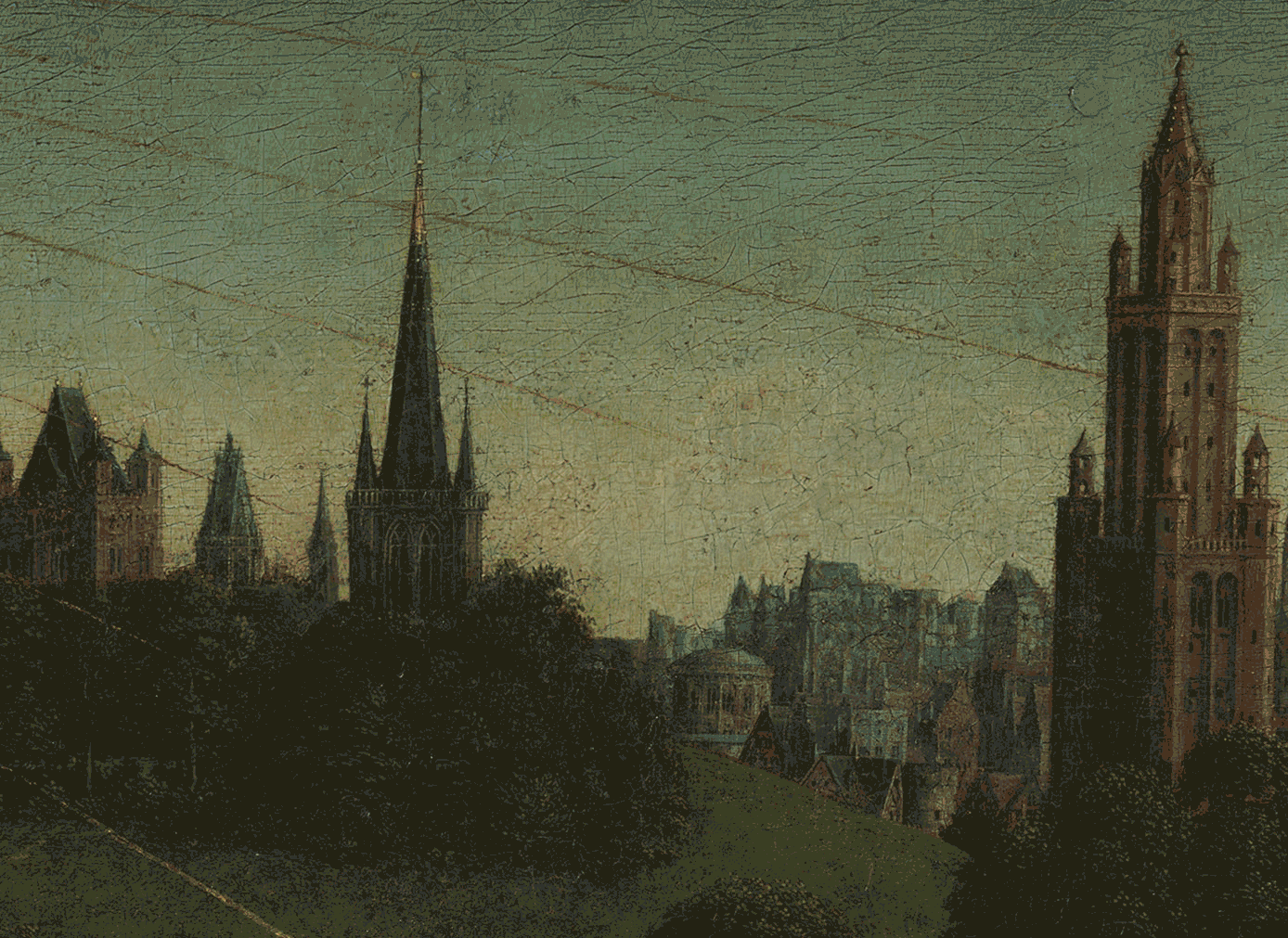

Coming to the light
The Ghent Altarpiece restoration
Hubert and Jan van Eyck’s Adoration of the Mystic Lamb, also known as the Ghent Altarpiece, is one of the world’s most famous works of art. The 15th century oil painting has been forged, dismembered, almost destroyed by fire, and is considered the world’s most stolen artwork. It was taken first by Napoleon’s troops in 1794, in 1816 by a vicar, and again in World War I. A single panel was stolen in 1934 and never recovered. The last time the altarpiece was stolen was in World War II by Hitler, but it was later recovered by the “Monuments Men”, a small corps of American and British museum directors, curators, and art historians that recovered tens of thousands of works of art stolen by the Nazis. Attempts throughout history to restore the altarpiece have resulted in overpainting, which covered much of the work’s original details. The most recent restoration, which began in 2012, removed much of the overpaint. The altarpiece is on public display in St Bavo's Cathedral in Ghent, Belgium, where it is protected by reinforced fire-proof glass housing.
The Ghent altarpiece
The Ghent Altarpiece was installed in St Bavo’s Cathedral in the Flemish city of Ghent in 1432. The 12-panel polyptych piece is 4.6 metres wide, 3.4 metres tall, and features famous Christian figures and icons, including Adam and Eve, John the Baptist and archangel Gabriel.








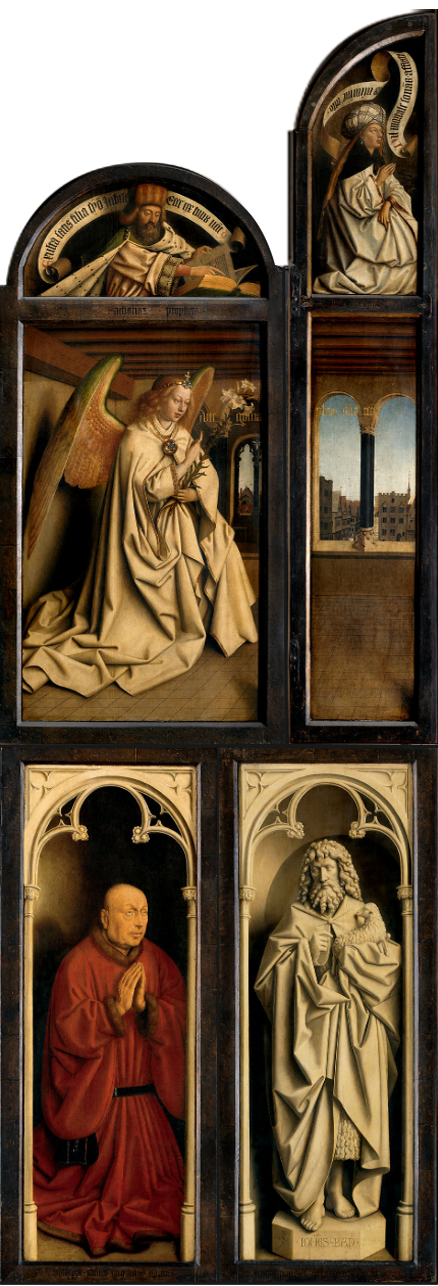
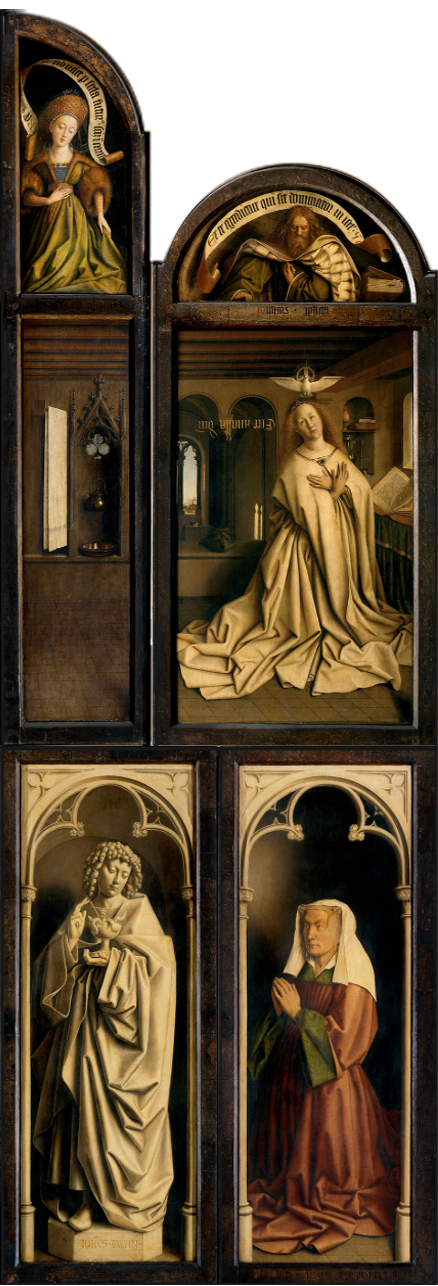
The Ghent Altarpiece has inspired and influenced artists for generations. The composition, brushwork and other painting techniques were considered revolutionary at the time. The level of detail in artwork of such large scale was unprecedented.
THE REVOLUTION OF OIL PAINTING
TEMPERA PAINTING
Before painting with oil became common, the most used medium in northern Europe was egg and casein-based tempera, which allowed artists to paint more precise details than the frescoes of southern Europe. But being almost opaque, each layer of paint obliterated the colour underneath, limiting the opportunity to gradually build textures, washes and glazes.
Oils had been blended with pigments centuries before the Van Eyck brothers’ masterpiece, but Jan van Eyck perfected oil painting techniques and was considered an innovator.
OIL PAINTING
Oil paint is a combination of refined linseed oil and powdered pigment. The medium is slow drying, allowing artists time to mix colours and create fine, opaque lines for detailed finishes or to dilute the paint with turpentine for more fluid strokes, translucent washes and glazes.
Oil’s versatility enabled Jan van Eyck to paint incredibly fine details and build layer upon layer of translucent brilliance to create a jewel-like finish, revolutionising painting in the process.
CONSTRUCTING THE ALTARPIECE
Wooden panels were used as the base for the painting – it would be many years before artists switched to canvas.
Oak was the artist's wood of choice, because of its hardness and versatility. The central altarpiece panel, known as the Adoration of the Mystic Lamb, is more than 30cm long, so a tree with a wide trunk was needed. Van Eyck chose a 400-year-old Baltic oak.
VAN EYCK’S PAINTING PROCESS
RESTORATION OF THE GHENT ALTARPIECE
The Ghent Altarpiece emerged from almost a decade of restoration in early 2020. The work was done in two phases, the first from 2012 to 2016. The recent second phase focused on carefully stripping away overpainting by other artists from the 16th century to reveal much of the painting’s original details.
Over the centuries, more than 70 per cent of the altarpiece had been painted over, according to Hélène Dubois, the head of the restoration project.
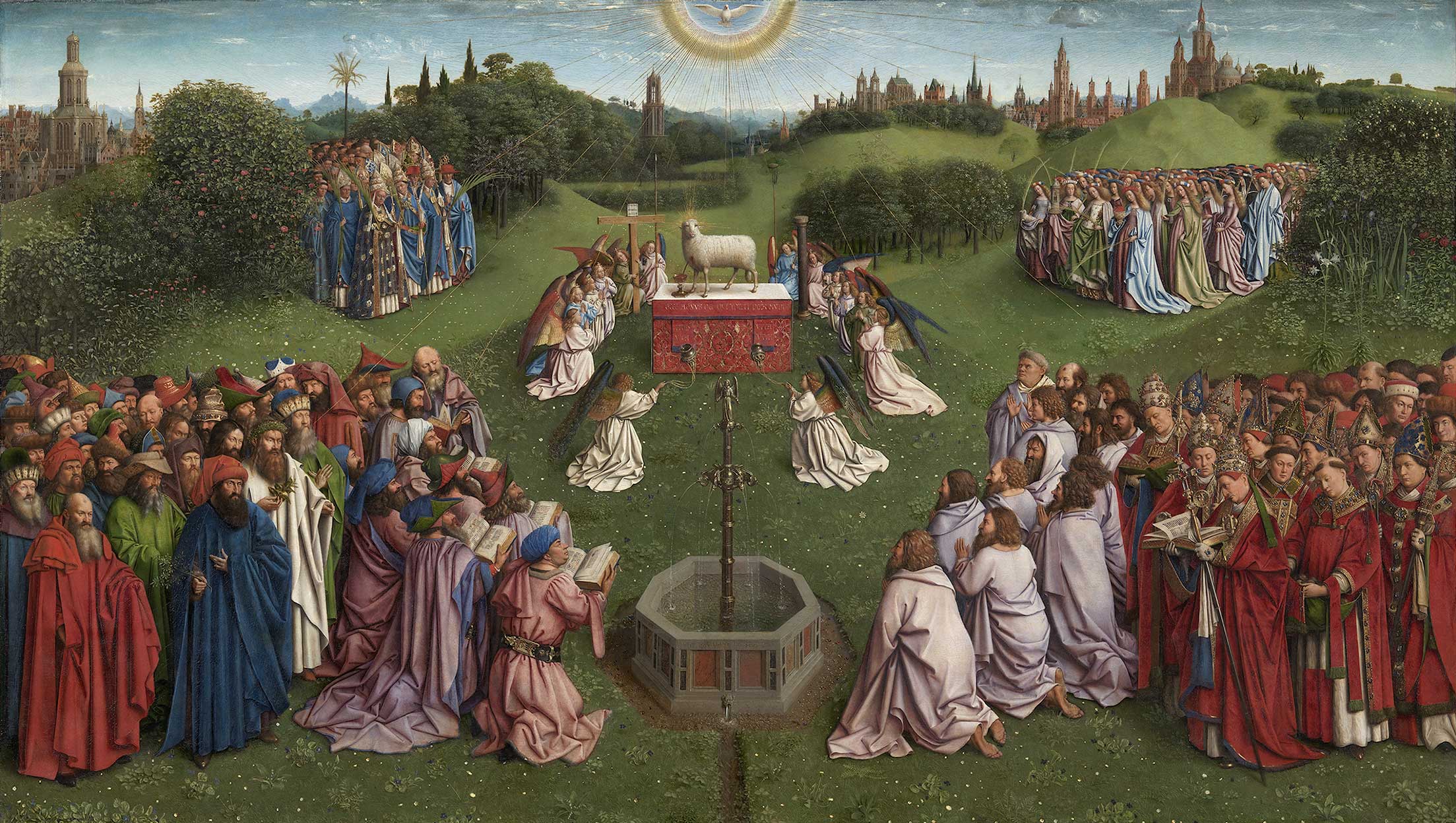
“You thought you were looking at Jan van Eyck’s [original work] but you were not,” said Dubois, referring to the younger brother artist who is thought to have painted most of the original work. Hubert van Eyk was believed to have started it, however.
Technology helped guide the restoration team. X-ray fluorescence imaging and infrared reflectance imaging spectroscopy were used to reveal every layer since 1432, as well as the condition of what the Van Eycks had originally painted.
With scalpels, solvents, and microscopes, Dubois and her team spent three years painstakingly removing the layers of overpaint, a process Dubois likened to delicate surgery.
The fruits of this labour were met with praise in some circles, criticism in others. Perhaps the most controversial reveal was the Lamb of God, the painting’s central figure, with its human-like eyes.
Early last year, Twitter lit up as users shared before-and-after images of the lamb’s head, its eyes forward-facing with an intense gaze. Its face had previously been grainy and fairly indistinct, the eyes in a different position.

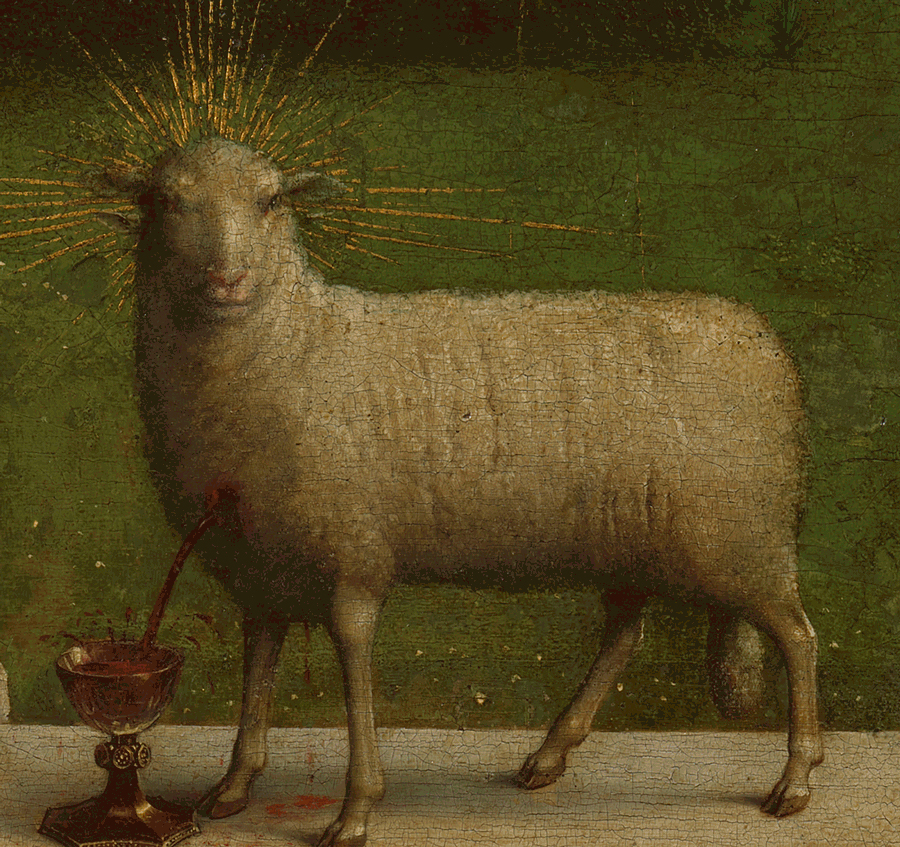
“If some people don’t like the look of the new lamb, that’s just too bad,” Dubois said, defending the restoration work.
In January 2020, Dubois’s employer, the Belgian Institute of Cultural Heritage, also addressed the social media storm.
“Several recent posts on social media and press articles, criticising the appearance of the original lamb painted by the brothers van Eyck, seem to reflect a misunderstanding of the results of the recent restoration campaign,” a statement said.
“The brothers van Eyck have chosen to represent the Lamb of God with human-like staring eyes, more human features and an intense gaze. They have chosen to do so, although they were perfectly capable of reproducing the natural appearance of a lamb.”
Art historians and theologians had buzzed at the discovery back in 2018. They pointed out that the lamb’s gaze better embodied the pain of Jesus Christ’s sacrifice, a central motif of the altarpiece, as the lamb bleeds from a chest wound into a golden chalice.
The Lamb of God was one of many reveals in this decade-long project. Degraded varnishes that gave the painting a yellowish glaze were also removed, uncovering the original 15th century colour palette; blue skies were finally blue while the contrast between lighter colours and shadowed areas was much sharper.

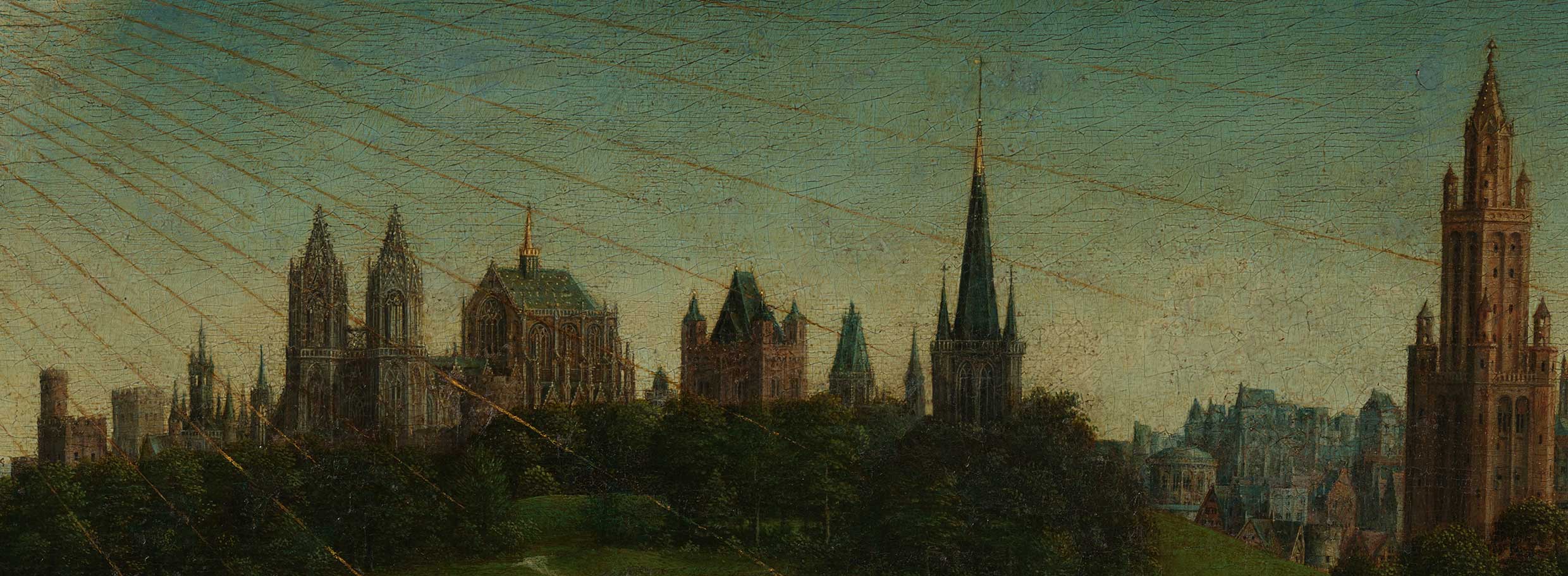
Hidden buildings emerged from the overpainted horizon, showing the kind of granular detail that has made the altarpiece so intriguing during different periods of history. Botanists have identified up to 75 species of flora in the backdrop of the altarpiece’s panels.
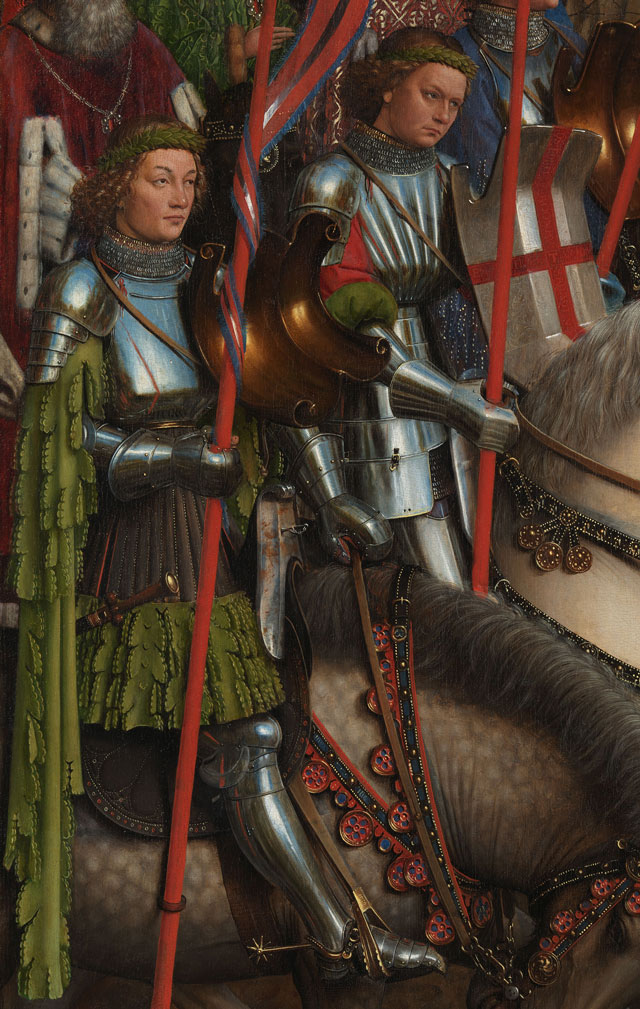
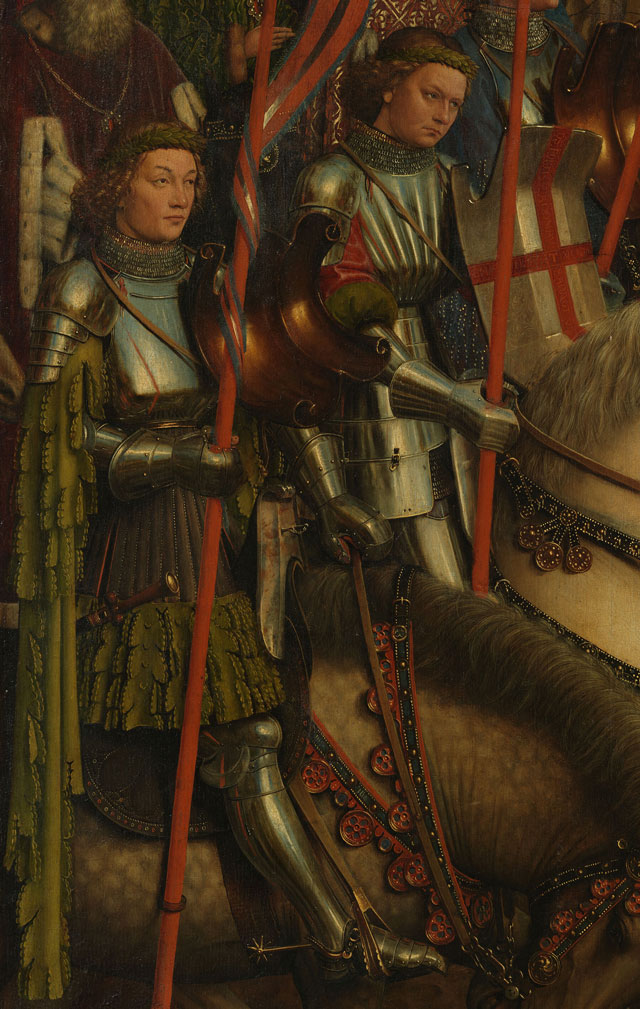
Despite the achievements of this project, Dubois said there was no guarantee the institute would be commissioned for the restoration’s third phase. Bidding was to be decided by public tender and most of the funding comes from the Belgian government, which has been preoccupied with the impact of the Covid-19 pandemic on the country’s economy.
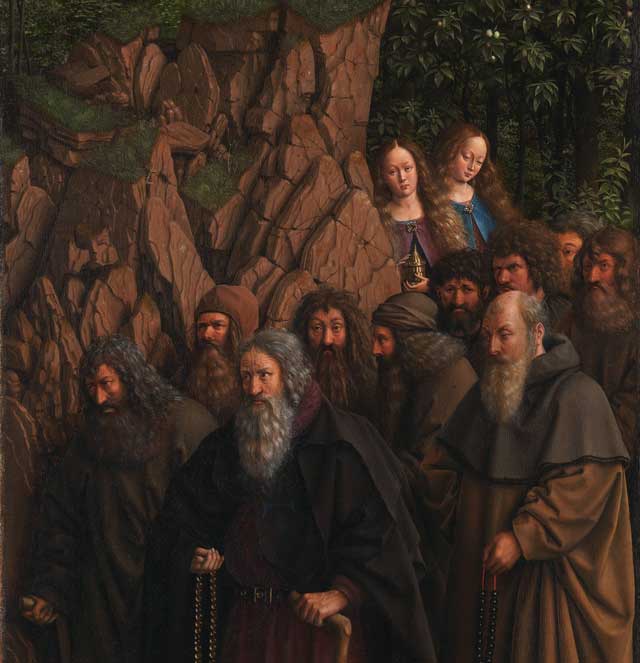
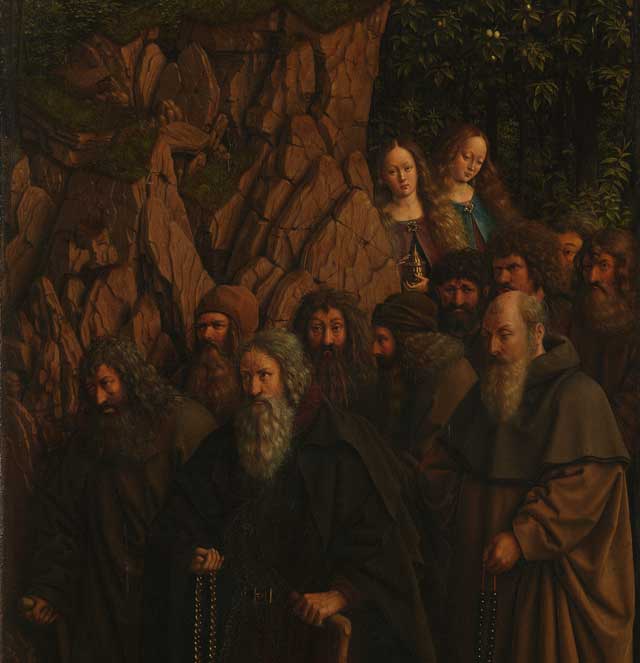
RESTORATION PROCESS
“There is a lot of uncertainty with the (coronavirus outbreak) about when we will be able to start (the third phase of the restoration),” said Dubois.
1 |
Firstly, all the dust from the surface is cleaned and removed. |
2 |
Remove modern varnishes dating back to the 1950s using solvents. Then remove all the varnishes dating back to the 17th century, as well as many applied in the 19th century, using different solvents that don't affect the original paint. |
3 |
While removing the first layers of the varnish, restorers realised the painting was vastly overpainted. The overpaint is removed using scalpels and solvents and the paint layers are consolidated with micro-tools surgeon glue. |
4 |
The re-touching is done with materials that can be removed if need be. It’s done with inorganic pigments bound in a synthetic resin and oil is never used for retouching. |
5 |
After this re-touching phase, the paint was varnished with dammar varnish. |
Dubois said the third phase would be the most difficult because of the fragility of the original paint layers. The gold background behind the main characters in the panels that feature the Virgin Mary, John the Baptist, and a figure believed to be one of the first depictions of God, is made up of tin metal that has started to corrode.
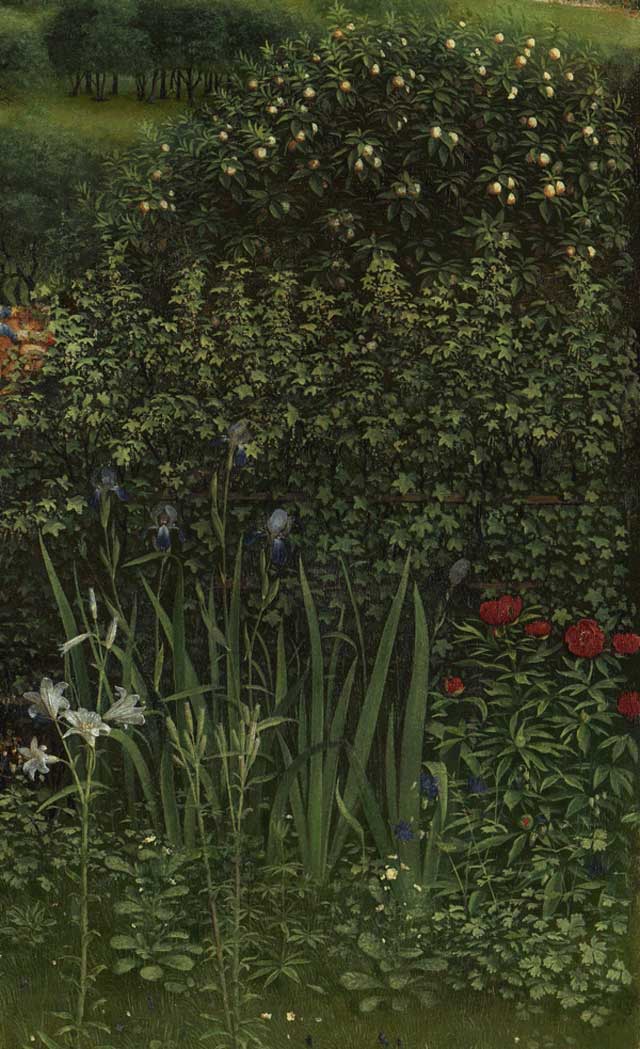
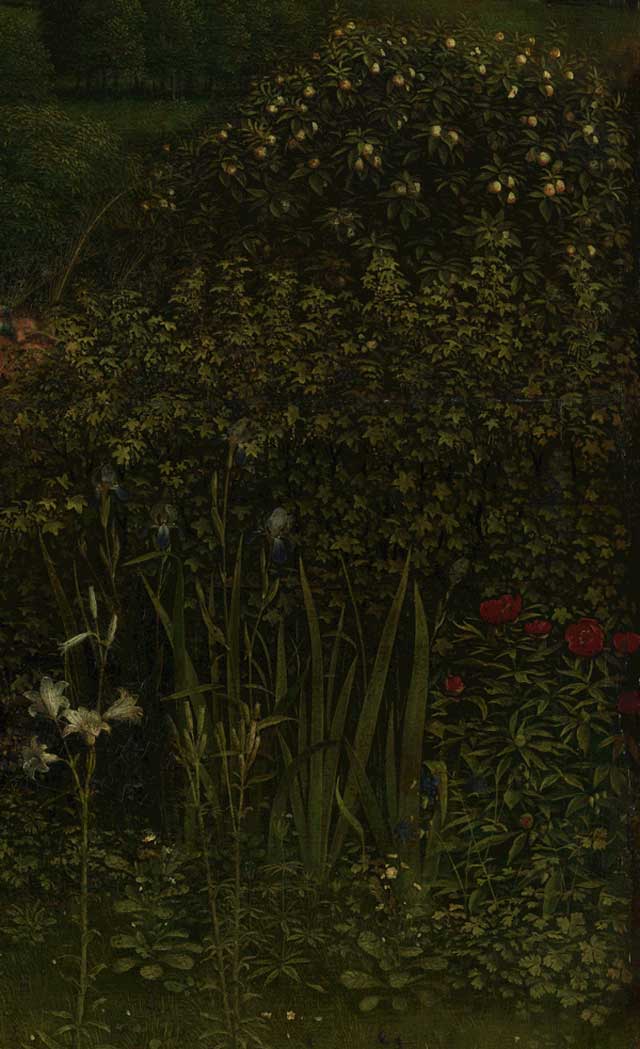
But there is a malady afflicting the Ghent Altarpiece that cannot be fixed by state-of-the-art restoration: one of the original 12 panels has been missing for decades. The lower left panel, known as the Just Judges, was stolen in 1934 and has yet to be found. It was replaced by a copy in 1945. Self-proclaimed thief, Arsène Goedertier, wrote a letter on his deathbed offering cryptic clues on the panel’s location, and included the French words for “bird” and “fur”, along with the number 152.
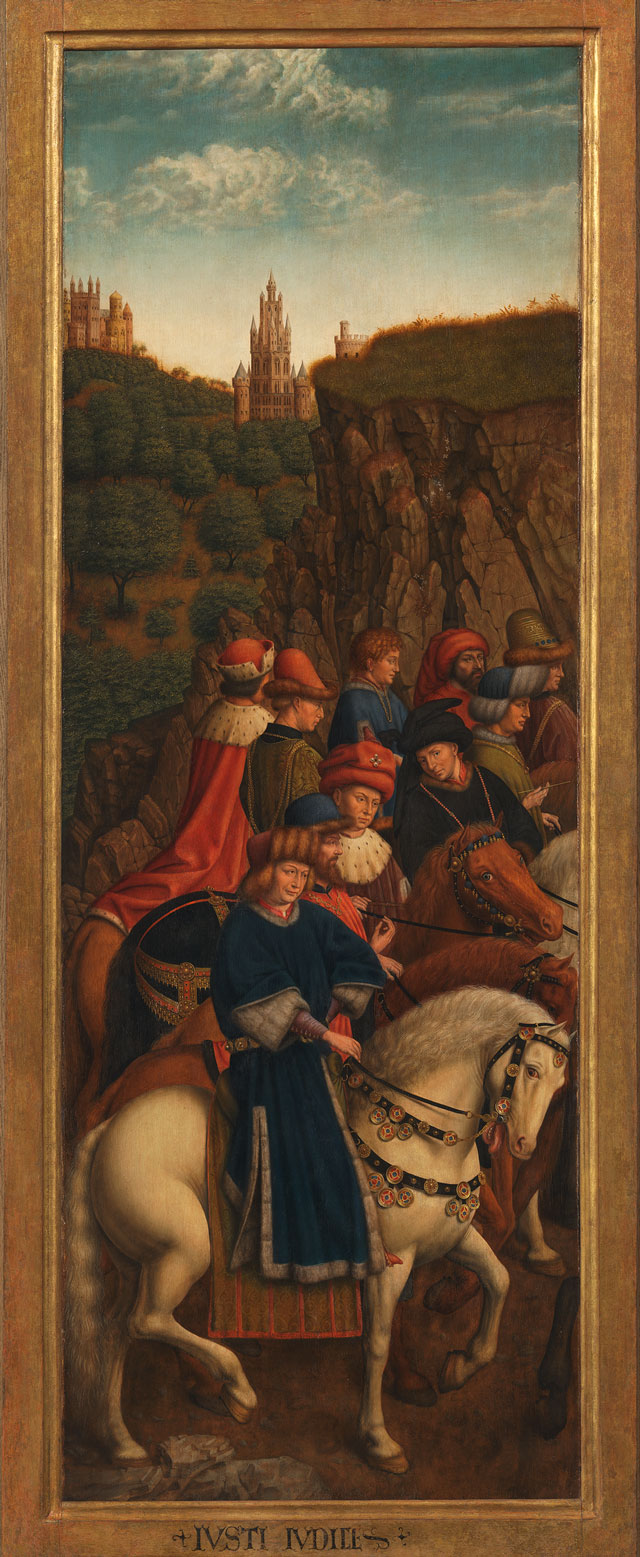
“I do very much hope that it is somewhere safe and well looked after so that one day it will come back to Ghent,” Dubois said.
Creative Director Darren Long
Edited by Andrew London
Additional web development by Dennis Wong
Sources: Conservation and restoration treatment of the Adoration
of the Mystic Lamb polyptych (The Ghent Altarpiece) by Royal
Institute for Cultural Heritage (KIK-IRPA); Report of
dendrochronological analysis, Dr Pascale Fraiture; Report in
progress: Observations on the supports and frames of the Ghent
Altarpiece, Jean-Albert Glatigny, Aline Genbrugge, Jessica
Roeders, Renzo Meurs; Report of dendrochronological analysis:
Central panels of the Ghent Altarpiece, Dr Pascale Fraiture; Les
Primitifs Flamands, P. Coremans, 1953; Il libro dell’Arte, Cennino
Cennini; Historical Dictionary of Renaissance Art, Lilian H.
Zirpolo, Encyclopædia Britannica, MapCreator, npr.org
Photos: Saint-Bavo’s Cathedral Ghent © Art in Flanders, photo
KIK-IRPA